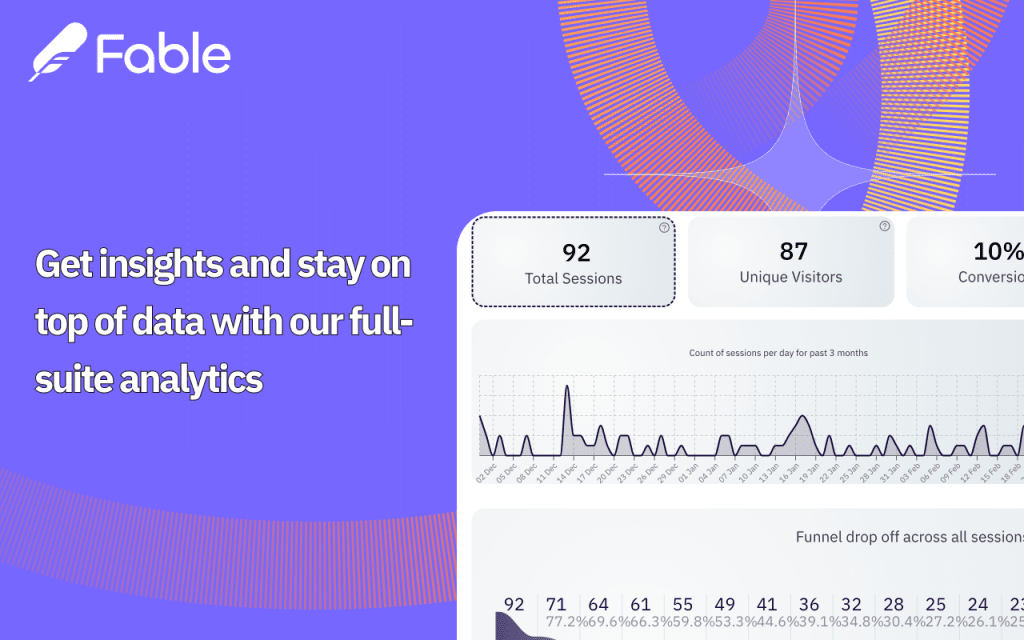The role of a business analyst is often underestimated. But let me tell you—it’s one of the most critical positions in modern businesses today. A business analyst is like the bridge between a company’s goals and the strategies that bring them to life. They solve problems, streamline processes, and make sure projects actually deliver results. It’s the perfect blend of analytical thinking, creativity, and people skills.
Disclosure: If you click on my affiliate/advertiser’s links, I am going to receive a tiny commission. AND… Most of the time, you will receive an offer of some kind. It’ s a Win/Win!
When I first started learning about business analysis, I didn’t quite grasp how multi-faceted the role is. A business analyst is more than just someone crunching numbers—they’re facilitators, strategists, and communicators. They identify opportunities, mitigate risks, and align projects with the company’s overall objectives. Honestly, they’re the unsung heroes of any successful business initiative.
In this guide, we’ll break down the key responsibilities of a business analyst, the skills you need to thrive in this role, and why it’s such a vital position in today’s competitive world of business. Whether you’re considering a career in business analysis, looking to hire one, or simply want to understand the value they bring, this guide has got you covered.
Table of Contents
1. What Does a Business Analyst Do?
A comprehensive look at the responsibilities and day-to-day tasks of a business analyst.
2. Why Every Business Needs a Business Analyst
Explore the critical role analysts play in driving growth and success.
3. Key Skills Every Business Analyst Should Have
Learn about the technical, analytical, and interpersonal skills required to excel in this role.
4. The Business Analyst’s Role in Project Management
Understand how analysts support teams and ensure projects deliver real results.
5. Data Analysis: Turning Numbers Into Insights
Discover how business analysts use data to make smarter decisions.
6. Bridging the Gap Between Business and IT
Learn how analysts facilitate communication and collaboration between departments.
7. Common Challenges Business Analysts Face
Explore the hurdles analysts encounter and how to overcome them.
8. Tools and Techniques Every Business Analyst Should Know
A look at the software and frameworks that streamline analysis.
9. How to Become a Business Analyst
Practical advice on education, certifications, and career paths in business analysis.
10. The Future of Business Analysis
Trends shaping the field and why it’s more important than ever.
11. Summary and Conclusion: Becoming a Master Business Analyst and Driving Impact
1. What Does a Business Analyst Do?
A business analyst (BA) wears many hats. They act as problem solvers, strategists, and communicators, ensuring that projects meet business goals and deliver value. At its core, the role is about understanding what a business needs and then finding ways to make those needs a reality—whether through process improvements, technology solutions, or new strategies.
One day, a business analyst might conduct stakeholder interviews to gather requirements for a new software system. The next, they might be poring over data to identify bottlenecks in a process or collaborating with IT teams to design and implement a solution. In essence, their work revolves around bridging gaps: between departments, between goals and execution, and often between business and IT.
For someone stepping into an entry-level business analyst role, the focus might be on tasks like creating reports, conducting research, or assisting senior analysts with requirements documentation. As you grow in your career, responsibilities expand to include leading projects, influencing strategy, and even mentoring junior team members.
An interesting aspect of this role is that no two days look the same. One moment you’re deep in analysis, and the next, you’re presenting insights to stakeholders. For anyone who thrives on variety and enjoys problem-solving, this role is incredibly fulfilling.
Pro Tip: If you’re preparing for an interview, expect business analyst interview questions that focus on your ability to gather requirements, analyse data, and manage stakeholders. Practising scenarios where you’ve solved complex problems or facilitated cross-functional communication will set you apart.

2. Why Every Business Needs a Business Analyst
A business analyst might not be the first role that comes to mind when building a team, but their value is undeniable. They ensure that projects stay aligned with business objectives, which ultimately saves time, money, and effort.
Take software development, for example. Without a BA, it’s easy for developers to create a product that doesn’t actually meet user needs. A business analyst ensures that requirements are clearly defined, communicated, and prioritised, reducing the risk of costly rework or project delays.
From a financial perspective, business analyst salaries might seem like an additional cost to small or medium businesses. But consider this: the insights and efficiencies they bring often lead to significant cost savings and revenue growth. They identify waste, streamline processes, and uncover opportunities for improvement.
Even in non-technical fields like marketing or HR, BAs can make a huge impact by aligning strategies with measurable business goals. They ask the tough questions that prevent teams from pursuing ideas that don’t deliver tangible value.
Quick Tip: Highlight the value of business analysts in your resume by showcasing measurable impacts you’ve made, such as cost reductions or process improvements. Numbers speak volumes to potential employers.
3. Key Skills Every Business Analyst Should Have
To succeed as a business analyst, you need a mix of technical, analytical, and interpersonal skills. Here’s a breakdown of the most essential ones:
1. Analytical Thinking: This is non-negotiable. Business analysts must sift through data, identify trends, and draw actionable conclusions. For example, analysing sales data to pinpoint underperforming products.
2. Communication Skills: Whether it’s writing detailed reports or facilitating stakeholder meetings, clear communication is key. A great BA can translate technical jargon into business language—and vice versa.
3. Problem-Solving Abilities: Businesses face countless challenges, from inefficiencies to shifting market demands. A BA’s job is to find solutions that work within constraints like budget and timeline.
4. Technical Know-How: While you don’t need to be a coder, familiarity with tools like SQL, Tableau, or Jira is a big plus. In tech-heavy industries, understanding system architecture or APIs can set you apart.
5. Soft Skills: Empathy, active listening, and diplomacy are critical. BAs often act as mediators between teams, so building trust and rapport is a must.
Even if you’re applying for an entry-level business analyst position, showcasing these skills will give you a competitive edge. Highlight projects or experiences that demonstrate these abilities, whether it’s through internships, coursework, or volunteer work.
Actionable Advice: Build a well-rounded business analyst resume by including both technical proficiencies (like Excel or Power BI) and soft skills (like teamwork or conflict resolution). Tailor it to the specific job description for maximum impact.
4. The Business Analyst’s Role in Project Management
While business analysts aren’t project managers, their roles often overlap—especially in smaller organisations. BAs ensure that project requirements are well-documented, feasible, and aligned with the business’s goals. This involvement is crucial to project success.
For instance, during the planning phase, a business analyst might work closely with stakeholders to define deliverables and prioritise features. They act as a translator between business teams and developers, ensuring that everyone is on the same page. Later, they may support testing phases, confirming that the final product meets expectations.
In agile environments, business analysts often play a hands-on role in sprint planning and backlog grooming. They work with product owners to refine user stories and ensure that tasks add value to the end goal. It’s this blend of strategic vision and day-to-day involvement that makes BAs so effective in project settings.
Pro Tip: If you’re aspiring to be a business analyst, familiarise yourself with project management tools like Trello or Asana. These tools are frequently used to track progress and streamline collaboration.
5. Data Analysis: Turning Numbers Into Insights
Data analysis is at the heart of business analysis. Whether it’s evaluating customer behaviour, identifying inefficiencies, or forecasting trends, a BA’s ability to interpret data directly impacts their recommendations.
For example, imagine analysing a dataset that shows a drop in customer retention. A skilled BA would dig deeper to uncover the “why,” such as identifying pain points in the customer journey or inefficiencies in after-sales support. They’d then present actionable solutions, like revamping onboarding processes or implementing customer feedback loops.
Tools like Excel, Power BI, and Tableau are invaluable here. Even basic SQL skills can help BAs query databases for more specific insights. But data analysis isn’t just about numbers—it’s about telling a story. The best BAs can translate raw data into clear, compelling narratives that inspire action.
Quick Tangent: Don’t underestimate the power of visualisation. A well-designed chart can communicate insights far more effectively than paragraphs of text. Learn tools like Tableau to bring your data to life.

6. Bridging the Gap Between Business and IT
One of the most vital roles of a business analyst is acting as a bridge between business teams and IT departments. These two worlds often speak entirely different languages, and misunderstandings can derail projects faster than you can say “scope creep.” That’s where the BA steps in.
Imagine a marketing team needs a new CRM system to streamline customer interactions. The business team knows what they want in broad terms, while the IT department focuses on technical feasibility. A business analyst translates the marketing team’s needs into actionable technical requirements that IT can implement. They ensure the final product meets business goals without overcomplicating the process.
For BAs working on tech-heavy projects, understanding IT systems is critical. You don’t need to be a developer, but knowing concepts like APIs, system architecture, and database management can make conversations with IT smoother and more productive.
Actionable Tip: If you’re aiming to excel as a BA in IT-heavy industries, take courses in system design or software development basics. Platforms like Educative or LinkedIn Learning are great starting points.
7. Common Challenges Business Analysts Face
No job is without its challenges, and the life of a business analyst is no exception. From misaligned stakeholder expectations to ambiguous requirements, the hurdles can be frustrating—but also incredibly rewarding to overcome.
One common challenge is managing conflicting priorities. Stakeholders from different departments often have competing goals, and it’s up to the BA to find a balance. For instance, the sales team might prioritise speed, while the finance team demands cost efficiency. The BA has to navigate these tensions and ensure the project moves forward without alienating anyone.
Another hurdle is dealing with vague or incomplete requirements. Not every stakeholder knows exactly what they want, and it’s the BA’s job to dig deeper, asking clarifying questions and conducting thorough research. While this can be time-consuming, it ensures that projects don’t veer off course later.
Finally, the fast-paced nature of the role can lead to burnout. Juggling multiple projects, tight deadlines, and constant communication requires excellent time management and self-care.
Pro Tip: Keep a record of past challenges and how you resolved them. These experiences are great to reference in business analyst interview questions and can demonstrate your problem-solving abilities.
8. Tools and Techniques Every Business Analyst Should Know
A business analyst is only as good as their toolkit. From gathering requirements to analysing data, the right tools can streamline your workflow and boost productivity.
Some must-know business analyst tools include:
• Microsoft Excel: A classic for data analysis and creating visual representations of trends.
• Tableau or Power BI: For building detailed, interactive dashboards that help stakeholders grasp complex insights.
• Jira and Trello: Popular for managing agile projects and tracking requirements.
• Lucidchart or Visio: Essential for creating process maps, flowcharts, and system diagrams.
• SQL: A powerful skill for querying databases and extracting meaningful insights.
On the techniques side, business analysts often rely on frameworks like SWOT analysis (Strengths, Weaknesses, Opportunities, Threats), MoSCoW prioritisation (Must Have, Should Have, Could Have, Won’t Have), and gap analysis to identify areas for improvement.
Quick Tangent: While tools are important, don’t forget soft skills. All the dashboards in the world won’t help if you can’t explain your findings in a way that stakeholders understand.
Actionable Tip: Dedicate time to mastering one new tool or technique each quarter. This keeps your skillset sharp and shows employers you’re committed to professional growth.

9. How to Become a Business Analyst
The path to becoming a business analyst isn’t one-size-fits-all. Some enter the field through technical roles, others via business operations or project management. The key is to develop a mix of analytical, technical, and interpersonal skills.
For beginners, an entry-level business analyst role is a great starting point. Focus on roles that offer exposure to data analysis, process improvement, or stakeholder communication. Even internships can provide valuable experience.
Certifications can also set you apart. Consider options like:
• Certified Business Analysis Professional (CBAP): Recognised globally and highly respected.
• Entry Certificate in Business Analysis (ECBA): Ideal for those just starting out.
• AgileBA Certification: Perfect if you’re working in agile environments.
Don’t forget to tailor your business analyst resume to showcase relevant skills and experiences. Highlight achievements like “streamlined reporting processes, reducing turnaround time by 30%” or “collaborated with IT to implement a new CRM system, increasing customer retention by 15%.”
Pro Tip: Include keywords like “data analysis,” “stakeholder management,” and “process improvement” in your resume. Many companies use applicant tracking systems (ATS), and these terms can help your application get noticed.

10. The Future of Business Analysis
The role of a business analyst is evolving rapidly, driven by technological advancements and changing business needs. As companies increasingly rely on data-driven strategies, the demand for skilled BAs continues to grow. In fact, the US Bureau of Labor Statistics projects a 14% growth rate for BA-related roles by 2029—much faster than average.
Emerging trends include the rise of predictive analytics, where BAs use machine learning and AI tools to forecast outcomes. Agile methodologies are also becoming the norm, requiring BAs to adapt to fast-paced, iterative work environments.
Enroll in the AI Product Manager Nanodegree Program for a comprehensive overview of AI and machine learning for business. You'll learn to build and train AI models, evaluate results, and measure success. Click HERE to get started NOW.Sustainability and ethical considerations are another frontier. Businesses are prioritising environmental, social, and governance (ESG) factors, and BAs play a key role in aligning projects with these goals.
Actionable Tip: Stay ahead of the curve by keeping an eye on industry trends. Subscribing to newsletters, attending webinars, or joining professional networks like the International Institute of Business Analysis (IIBA) can help you stay informed.
Mastering the Art of Project Management: Your Path to Excellence. Begin your journey HERE.11. Summary and Conclusion: Becoming a Master Business Analyst and Driving Impact
The role of a business analyst isn’t just a job—it’s a critical function that bridges the gap between strategy and execution. Whether you’re uncovering inefficiencies, aligning stakeholders, or turning data into actionable insights, the work you do has the potential to transform organisations from the ground up. And honestly, isn’t that exciting?
Throughout this article, we’ve explored the many facets of the business analyst role. From understanding daily responsibilities to mastering essential tools and techniques, the key takeaway is that being a successful business analyst requires a balance of technical know-how, critical thinking, and exceptional communication skills. Whether you’re aiming for an entry-level business analyst role or looking to advance your career, there’s always room to grow and refine your expertise.
One thing I’ve learned is that no two days in this role are the same. There will be challenges—ambiguous requirements, conflicting priorities, or that dreaded moment when a project goes off course. But here’s the good news: every hurdle is an opportunity to sharpen your problem-solving skills and prove your value. With patience and perseverance, you can turn those challenges into triumphs.
As businesses become increasingly data-driven, the demand for skilled business analysts will only grow. This isn’t just a profession; it’s a future-proof career path filled with opportunities to innovate, lead, and make a meaningful impact. Whether you’re passionate about improving processes, driving change, or simply love solving puzzles, the business analyst role has something to offer.
If this article has sparked your interest or helped you identify areas for improvement, why not bookmark Krislai.com? There’s so much more to explore—from building leadership skills to mastering other critical business functions. Together, we can tackle the challenges of modern business and set you on the path to success.
So, what’s your next step? Whether it’s refining your business analyst resume, preparing for business analyst interview questions, or diving into a certification program, now is the time to take action. You’ve got this—and I’ll be here every step of the way with more tips, insights, and resources to help you excel. Let’s keep learning, growing, and thriving together 🙂
- How Live Shopping Can Skyrocket Your Small Business Sales: The Ultimate Guide to Getting Started
- Turn AI Anxiety into Competitive Advantage: How to Future-Proof Your Workforce for the AI Revolution
- Unlock Profit: Calculate Customer Lifetime Value & Maximize Growth
- Creating a Customer Persona: A Step-by-Step Guide On How To Do It
- Unleashing the Power of Digital Signage: The Best Software to Transform Your Business








